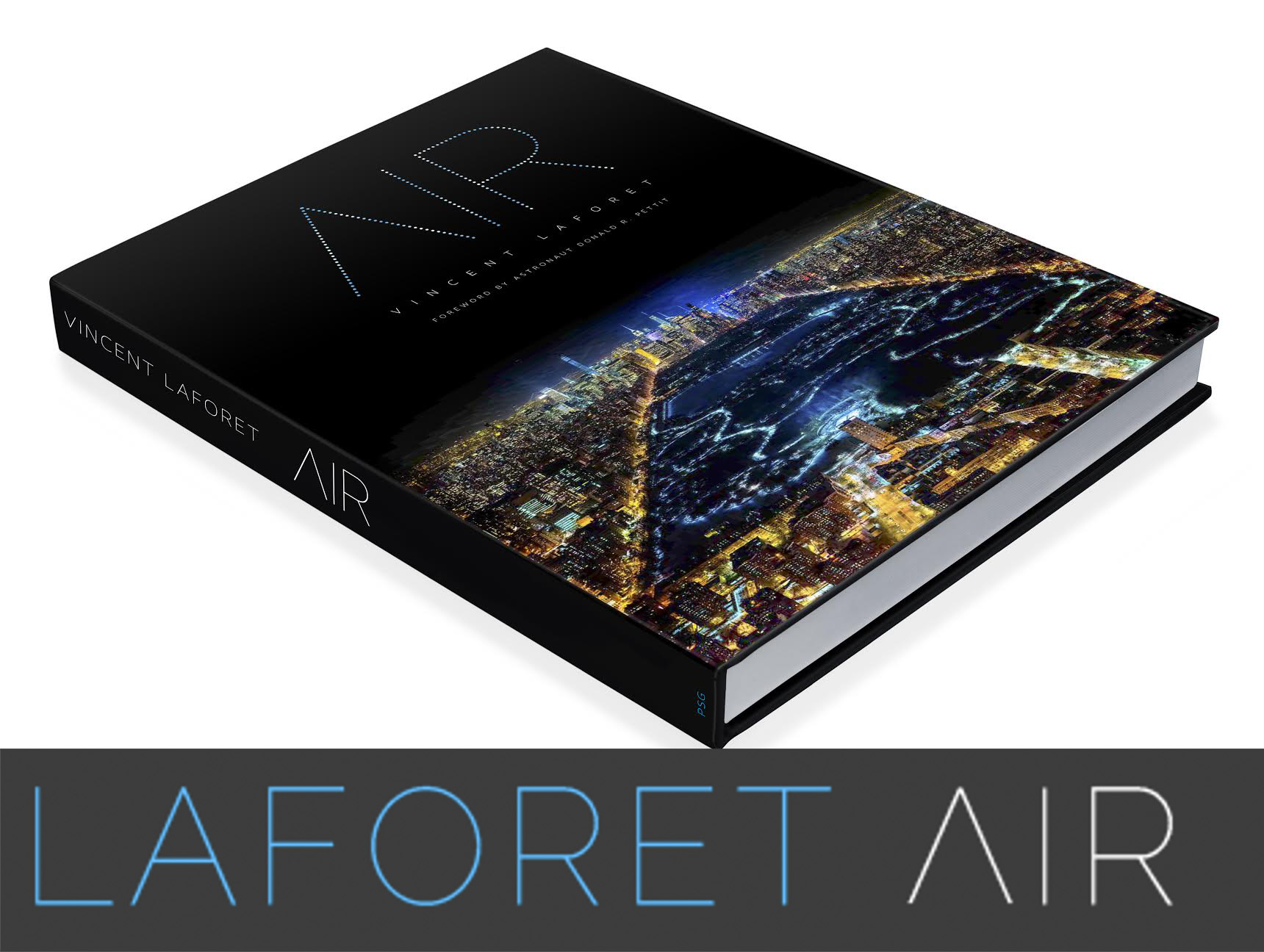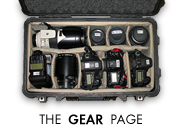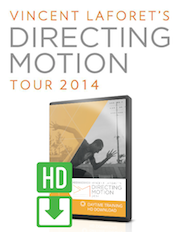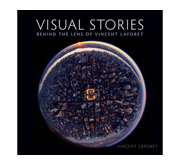Video & Post Workflow and Backup Strategy
The funny thing is: I was planning on writing about my video and photography workflow within the next few weeks (ok well months – it’s been BUSY). I can now cross that off my calendar because my buddy Chase Jarvis just did a pretty extensive video that describes his workflow – and he did it WELL.
And you know what? Our workflow is SCARILY SIMILAR – if not close to identical.
The only main difference? I back everything up to LTO Tape at the end of the process and keep two copies of those tapes – one in Los Angeles, and one in New York (kind of like Chase’s theory of making sure floods/meteors etc don’t strike the ONE location where your data is backed up. I call it Armageddon myself and joke that if CA falls into the ocean – I’ll have some data in NY…) I do also send my still masters to PhotoShelter for online storage as well.
One of my favorite sayings of all time is one by Bert Lance: “If it ain’t broke – don’t fix it!”
That comes into play here. Chase – thanks for saving me the time 😉 To everyone here – check out Chase’s video and his workflow – and understand that my workflow is nearly identical. I’ll detail some of the minor differences below after the video in case you want to get into the nitty gritty / nuances between our similar workflows.
What we use here at LAFORET | VISUALS:
Out in the field:
MacBook Pro 17″ with internal 256GB SSD.
Lexar Firewire 800 readers (stackable) as well as the USB readers that take both CF and SD cards.
For External hard drives we us – G-Tech Mini HDs – looking to upgrade to the SSD versions as soon their capacity increases a bit. We’ve also used a variety of portable RAID solutions out there but haven’t had a chance to play with the portable G-Tech RAIDs yet.
As with Chase – we keep two copies of everything (sometimes three) AND KEEP THE DRIVES IN SEPARATE LOCATIONS – no one flies back with all of the drives in one backpack – EVER.
We also keep all of the data on our Lexar cards for as long as possible (until they need to be shot over) no matter how long… just in case!
Software: we use Apple’s Aperture for all of our stills: from the initial edit, to keywording, RAW conversion, basic toning and as our archive software. We also use Adobe Photoshop CS5 for more advanced compositing.
We then use Apple Final Cut Studio’s Compressor and MPEG Streamclip for conversion of HDDSLR Footage to Apple’s ProRes format.
We also use RED’s REDCINE-X to convert the red footage to ProRes.
I am currently playing with Red Giant’s Magic Bullet Grinder Software as well to see how that flows in to all of this and to see how I can implement it.
We also use PluralEyes to sync audio and video (a review is coming out on that soon.)
We use Apple’s Final Cut Pro for all of our video editing and grading in Color.
Delivery:
All still material is delivered via secure web galleries to clients, and as 16-bit TIFFs on HDs or via FTP. We’ve also been known to put stuff up on our business MobileMe account – for clients who prefer to receive a direct link that they can click on (and the files download straight to their desktops) – especially clients who don’t know how to/ or don’t want to deal with FTPs.
All video material is delivered in ProRes 422 / ProRes 422HQ / ProRes 444 – depending on the output to clients. We also output in a number of H.264 formats for web delivery – usually through Apple’s Compressor sofware.
As with Chase all of our exported stills and video files are kept in a separate location (different RAID.) We also create AppleTV res H.264 files for our website, and put them on our iPads and iPhones to show clients during presentations.
Back in the studio:
Very very similar to Chase’s setup. We use Apple’s Time Machine to backup our desktops AND laptops – to HDs and 2TB Time Capsules. The idea is – when someone opens up a laptop here -the backup starts in the background automatically. Our desktops are always connected – and backup on a continual basis. My rule in backup is: if you have to think about it/ schedule it – you’ll pay for it. Because the things always die the day before you’re skedded to do that critical backup. So set up your system to do hourly, daily and weekly backups.
We also have Apple X-Serves here connected via fibre connections back to the MacPros. And we have 2 racks of Apple X-RAIDS here as well. One of the RAIDS is an XSAN that all desktops can connect to simultaneously and is perfect for editing large video files and projects.
The final step is that every day the X-RAIDS are backed up to LTO tape – on our Tandberg Data device.
Every six months or so – I first double-check that both LTO Tape backups are up to date (the backups are kept in a fire-retardant and waterproof case) I then copy everything to my Drobo Pro. And then I delete the old data from the X-RAIDs (as the data now lives on two separate sets of LTO tape, and the Drobo Pro.)
This allows me to have my most relevant/critical date online on my super fast X-RAIDs/XSAN. And the full video/still shoots that I no longer think I’ll need access to on two sets of LTO Tape, and LIVE on a slightly slower DROBO PRO system connected to my system via iSCSI. I also send my TIFF files files and RAW files up to the cloud (online storage) at PhotoShelter for extra safe keeping.
And so on…and so on…
Ah the magic of workflow. It can be so tedious and boring – until you lose incredibly valuable material. And then you come to worship the backup gods – forever.
To read more about Chase’s workflow and specific links to the gear he uses – read here.
Tags: Chase Jarvis, Digital, Film, Hardware, HDDSLR, Software, Video, Vincent Laforet, Workflow













VLF,
Thanks for posting this. Is your file naming scheme the same or do you have a different approach?
Joe Womble
Vincent Laforet Reply:
June 23rd, 2010 at 12:33 pm
@Joe Womble, Simple(for me)
F_100623_CLIENT_JOB_ORIGINALFILENAME
The first letter is F (for film/video) E (for editorial) C (for commercial) P (for Personal) etc etc
Very informative! Why did you decide to go with LTO tape VS external HDDs for archiving? Just curious as I am looking at something similar as my studio gets bigger and my backup needs have grown beyond the “plug in an extra USB HDD” 🙂
Vincent Laforet Reply:
June 23rd, 2010 at 12:35 pm
@Ed Z, I think LTO is the safest long term solution… Hard Drives need to be spun up every few months or the oil on the needle will cause the needle to “stick” to the HD surface… that’s why you sometimes hear that “click” of death when you start up a new HD.. Chase is swapping his HDs every seven days – so it’s cool. I like to put the LTO away somewhere AWAY from the office (as he does with his HDs) and not worry about spinning the drives up…
Vincent I also work with a 17′ with a ssd drive inside, but I installed a 256MB by a manufactor called crucial which makes an incredible 335 mb/s. Since you are always looking for the best gadget to work with, the aforementioned hard drive is $700, but it’s a different world compared to the one built in by apple.
Vincent Laforet Reply:
June 23rd, 2010 at 12:35 pm
@Gianluca, Very nice!
Vincent Laforet Reply:
June 23rd, 2010 at 12:36 pm
@Vincent Laforet, Thanks – as soon as they get a 500GB or up – I’ll swap it out for sure
For some reason i’m not surprised that chase and vince have similiar backup methods. The LTO tapes are surprising though. Where do you buy those things?
Vincent Laforet Reply:
June 23rd, 2010 at 11:33 pm
@Sam, Any computer store – just search for IBM LTO tape for example.
Geez, just thinking about how much money is tied up in those workflows is mind boggling!
Just those SSDs are pricey as heck, but still awesome! I run a 80GB Intel drive in my MacBook Pro in lieu of a DVD drive (who uses those anymore?!) along side a 500GB mechanical drive.
But, they are still great plans, I try and do something similar but on a fraction of the scale.
Vincent Laforet Reply:
June 23rd, 2010 at 11:32 pm
@Kevin Sherman, It’s all quite relative and that’s the key. The amount of money we put into this is insane… BUT – our clients pay well. And if I lose a client’s images on a 6 figure shoot – well – let’s just say it’s absolutely not an option. Also – I keep almost everything I shoot – I’ve had “outtakes” sell to commercial clients for a good amount of money – images I would have thought wouldn’t resale… I held onto them – and sold them… and that paid for the RAID in one sale. Make sense? Do what makes sense for you, your clients and your risk factor. Chase and I are definitely pulling out all of the stops to GUARANTEE we don’t lose data… or at least try our absolute best.
Kevin Sherman Reply:
June 25th, 2010 at 9:33 am
@Vincent Laforet, No doubt. Those LTO tapes are pretty cheap, just the drive isn’t. And I’m in the wrong part of the photography business!
Do you use SSDs as external drives like Chase? Curious if they really offer any performance improvement because of the limitations of FW800.
This is just too good. Thanks to you and Chase.
Vincent,
Why is the world still using raid systems like the G|SAFE & G|SPEED when you need identical HD’s and are not expandable like The Drobo systems?
Kevin Sherman Reply:
June 25th, 2010 at 5:13 pm
@Chris, the Drobo’s aren’t rack-mountable for those massive 32-drive arrays. And when you’re at this high of a dollar investment, needing to have identical hard drives isn’t a problem at all. In fact, it might be a benefit for data security and stability.
Kevin Sherman Reply:
June 25th, 2010 at 5:15 pm
@Kevin Sherman, Actually, looks like they DO have rackmount adapters. Does Drobo have a FibreChannel connection option too?
Chris Reply:
June 28th, 2010 at 5:24 pm
@Kevin Sherman, i understand that a drobo cant really replace the huge 32 bay systems. but for the smaller units like the g-share… why wouldnt you just get a drobo ?
no there doesnt seem to be a fiber option….
Amazing post Mr. Laforet, thank you so much for sharing.
Vince, thank you very much for pointing to Chases video. At the moment I am implementing something like that a bit differently, but still very similar to what Chase described. In fact it is based on a former article of him from last year or so. I guess, that for me external HDD’s are ok for some time. I will use 3 of them and swap every 10 days. At least that is the plan…
博客文采写的不错!我还喜欢你其他文章
Hmmm…I think this is pretty much an “end-user” type setup and it would seem they buy everything off the Apple Store. On the one hand it’s interesting to have so much money and just go for the bling setup, but at the same time it’s a super homogenous environment which to me mean they’re not really being pushed much on the tech side. Go to any larger movie post house and you’ll a discordant mess of heterogenous systems held together by some very clever people and a lot of tape, both the literal and the software variety. Whilst on the hand it’s great to show clients how slick you run your shop I think the “scalability” factor here is somewhat proportional to the size of your clients wallet.
My point is that this is a complete gear freak setup. For a starter I don’t understand how they can do any color critical work on those Apple Cinema displays. So many things here have me baffled…
Sam Reply:
July 26th, 2010 at 9:10 pm
@RoedGroed, so you’re angry that vincent and chase have a backup strategy that is this streamlined? the color work is more based on the calibration of a monitor than the monitor itself. the backup for a production house probably creates so much data that if you were to digitize all books in the world the production house would still have more data.
What kind of case/model is that for the laptop? Looking for something similar for my 17’MBP setup…
OMG do you have ANY idea how many photos you would have to sell on iStock to get that gear?!
This HAS to be FAKE!!!!!
MPEG Converter for Mac is the best .MPG Converter Mac OS software to convert various video formats including MPEG4, iPod Touch MPEG4, iPod Nano MPEG4, iPhone Video MPEG4, iPhone Video H.264, Apple TV MPEG4, M4v-MPEG4 and so on. MPEG Converter for Mac can convert popular video formats to be played ony portable devices like iPod, iPhone, Apple TV, Zune, PSP, Video capable MP4 players, etc.
I’ve been surfing on-line greater than 3 hours these days, but I by no means discovered any interesting article like yours. It is pretty worth enough for me. In my view, if all website owners and bloggers made just right content as you probably did, the internet shall be a lot more helpful than ever before.